Sunrise on Wednesday, November 9. The full moon was still high in the sky and shining bright.
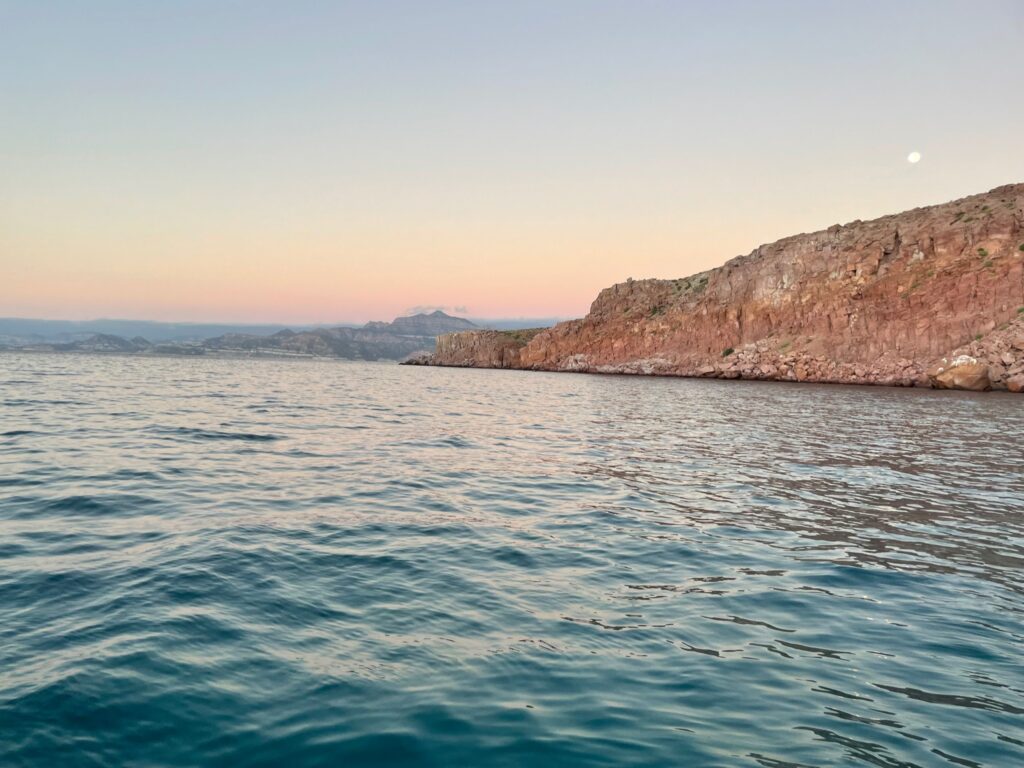
We are sad to report that we had another uncomfortable night. Unfortunately, the flopper stopper got caught on the shackle and wasn’t working properly. Even after Eric fixed and redeployed the flopper stopper, it was still rolly.
When Christi went outside to watch the sunrise, the few uncovered spots on her body were attacked. We were all feeling lethargic and grouchy from the rocking. Most of the boats in the anchorage left.
In more bad news, the forecast had changed again. The winds were supposed to change direction early in the morning, but now the forecast said it wouldn’t change until the early afternoon. Even if the wind really did change direction, it take several hours for the swells to die down, so it was going to be miserably rocky all day.
We lamented about how good we’d had it in Agua Verde. The reality is that there are not many anchorages where it is possible to go to shore when there are big swells in the anchorage. Usually, the swells hit the shore, making it unsafe to land and launch the dinghy. The fact that there was a protected area where shore landings were possible made both Agua Verde and Isla San Francisco special.
But here, the bugs were eating us alive, even on the boat. We’d taken for granted the fact that Agua Verde was free of bitey bugs. In Agua Verde, we had Kosmos’s door and windows open. We all spent time on the various decks, especially Keith, who loved to play on the foredeck. Here, we had to keep Kosmos closed up, and we couldn’t sit on deck and enjoy the beautiful scenery. We were starting to hate Isla San Francisco.
At about 1030, we made the snap decision to move to an anchorage called San Evaristo that was an hour and a half to the northwest. We quickly got Kosmos “ready enough” for sea and pulled up anchor at 1145. According to our charts, on the way there, we drove over an island. FYI, the red exclamation point to the right is where the island really was located, and Eric manually entered that information into the navigation system.
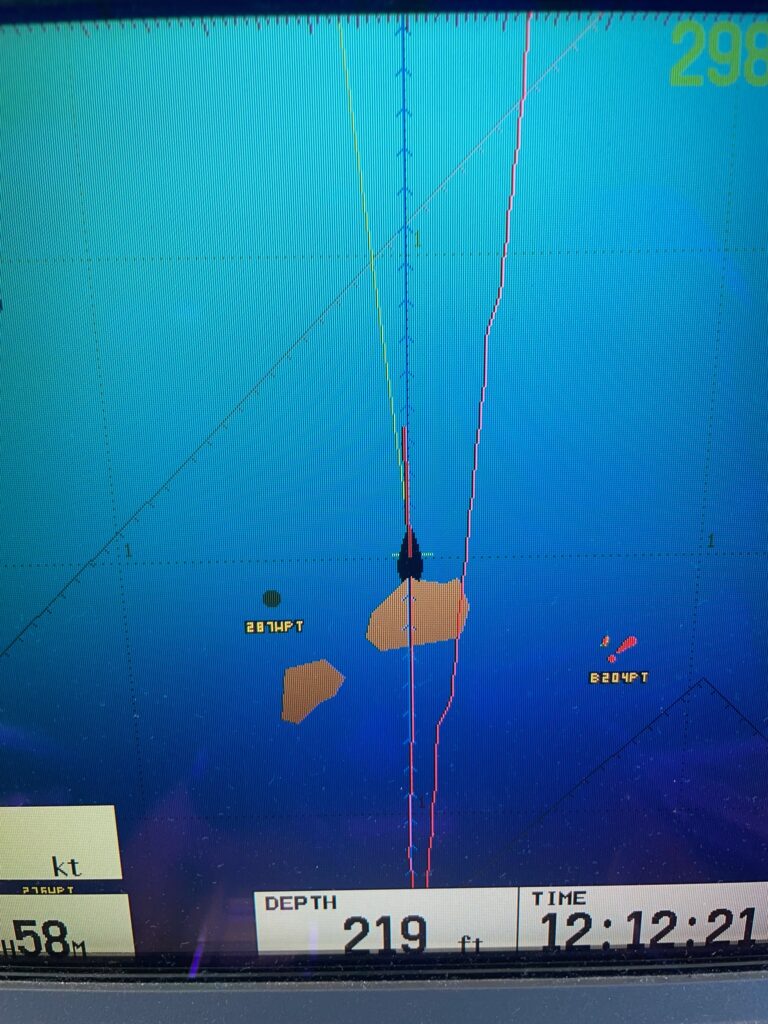
San Evaristo is a small fishing village on the Baja peninsula, in a small cove tucked behind a point, so it is fully protected from the north and west winds (the north is where the forecast winds are supposed to be coming from). San Jose island is to the east of San Evaristo, and the island offers some protection from big fetch from the east. Here is a photo of the bay from the distance.
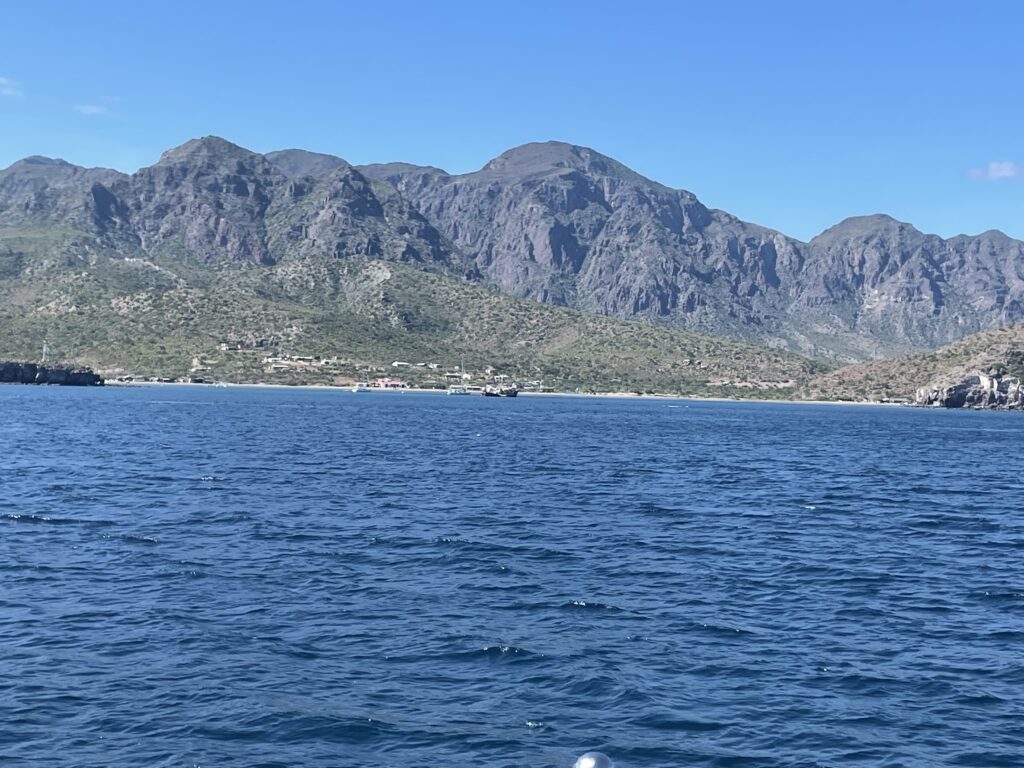
At the north end of the bay was a small nook. We decided the nook would be the best spot to anchor in since it appeared to be the most protected from the forecasted winds. We were happy to see the nook was empty.
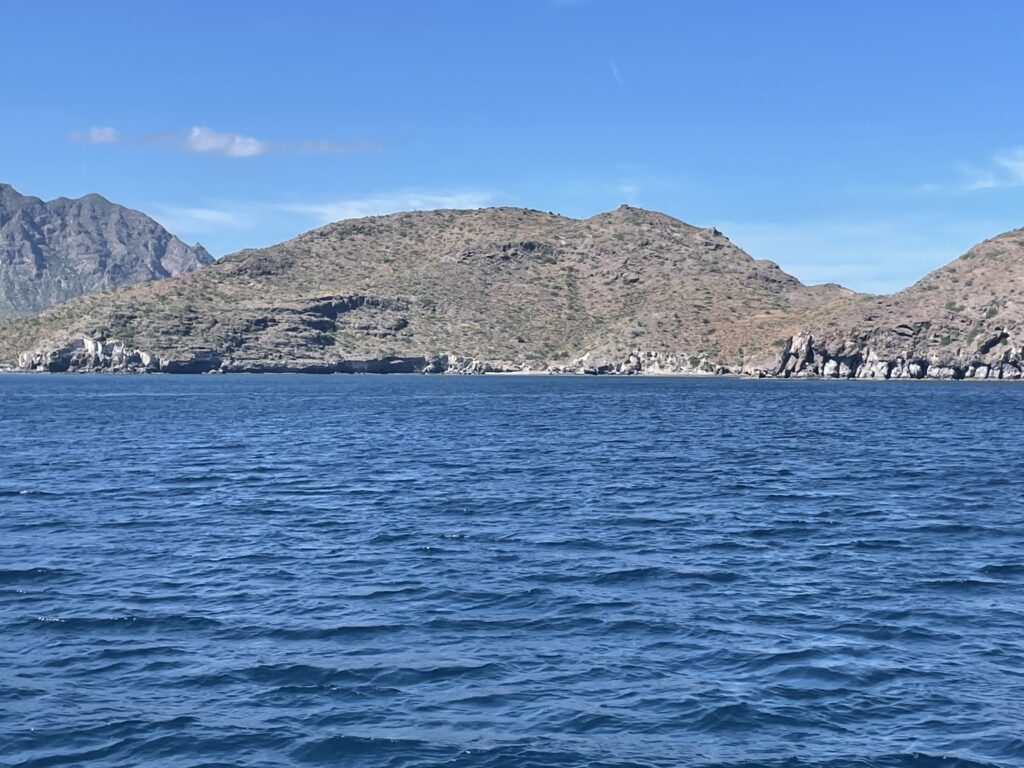
After we dropped anchor, we were relieved to find that the anchorage was calm. We got the dinghy down. We scoped out some potential snorkeling spots, then went to lunch at the only restaurant in town, located on the beach at the southern end of the bay.
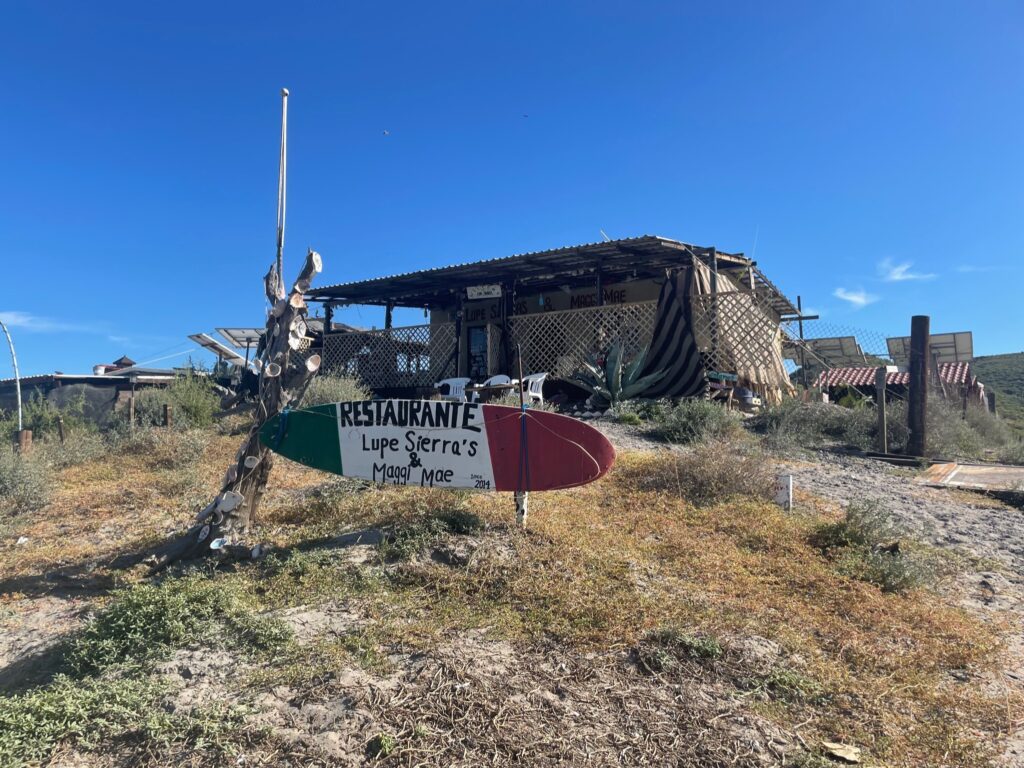
Looking northeast at the mouth of the bay. You can just make out Kosmos in the nook at the far north.
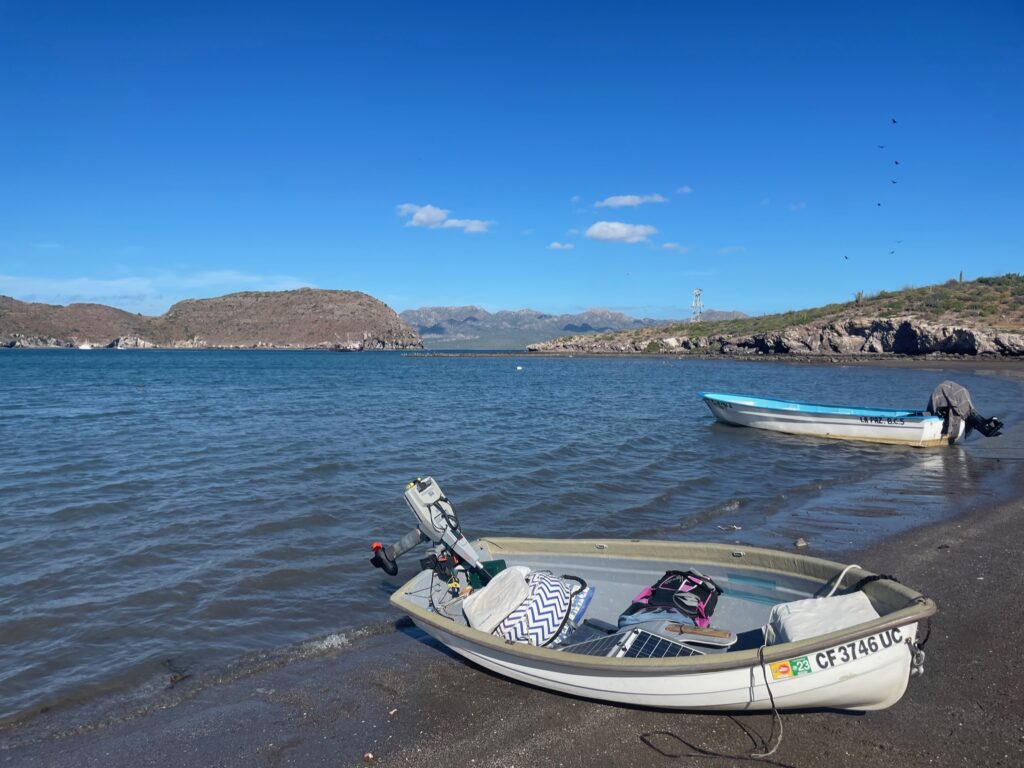
Looking northwest at the rest of the bay.
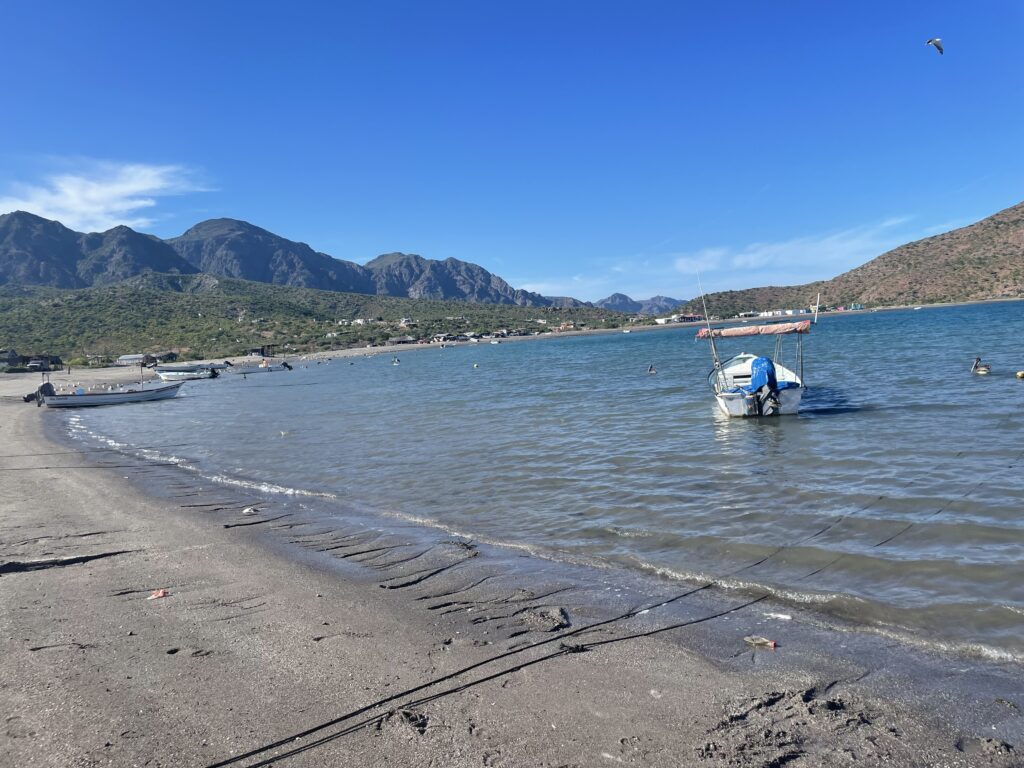
The restaurant was decorated with seashells that look like they were hand painted by various patrons.
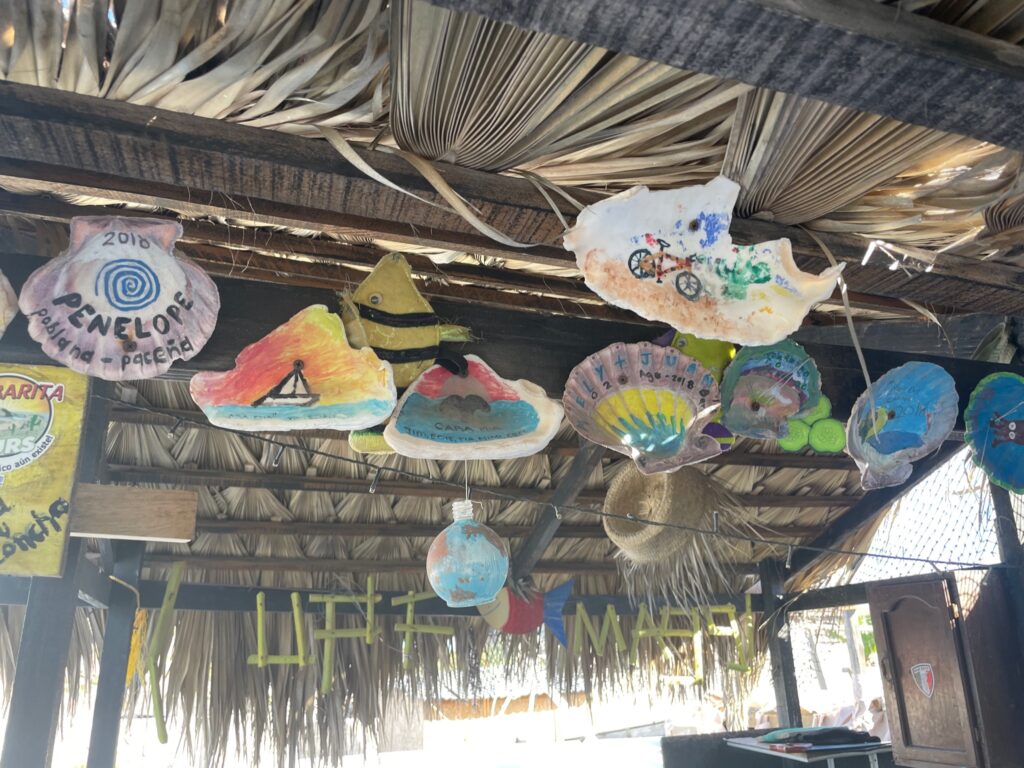
Behind the restaurant were little bungalows. We got the sense they could be best described as glamping.
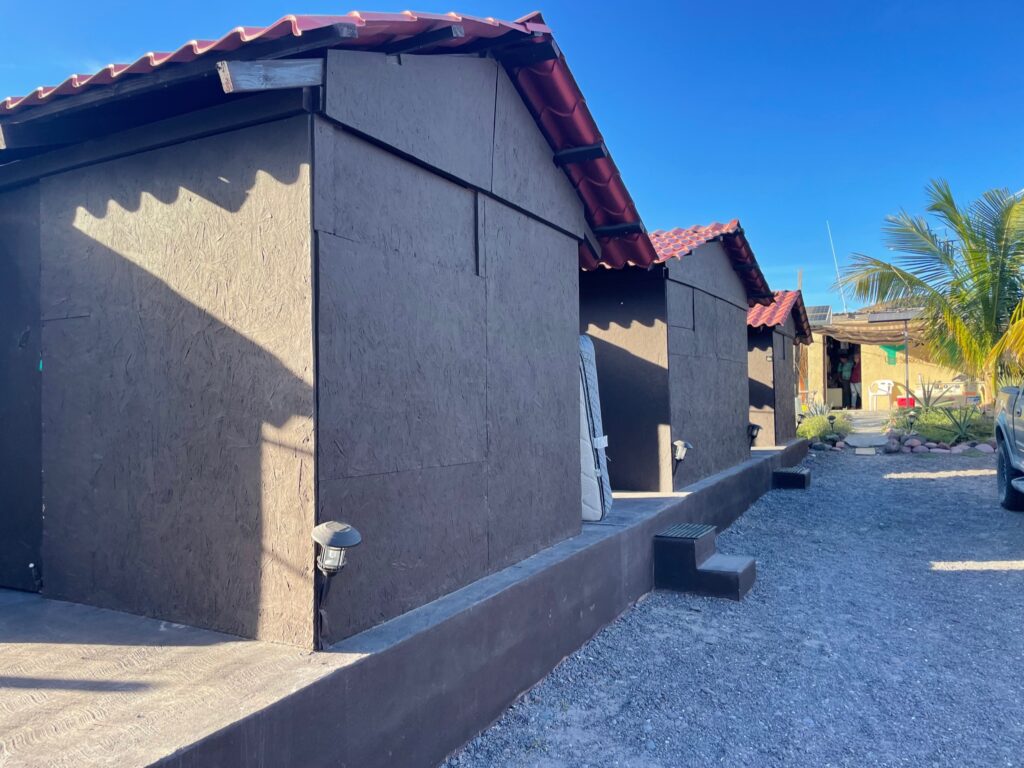
While we were in the restaurant, the wind finally shifted around, but the wind was light and the forecast had said strong winds. The wind was also a bit chilly. As far as we could tell, there were no bugs. What a relief!
After we were done eating, we walked around the area near the restaurant. Directly next door to the restaurant was a stone house that looked new.
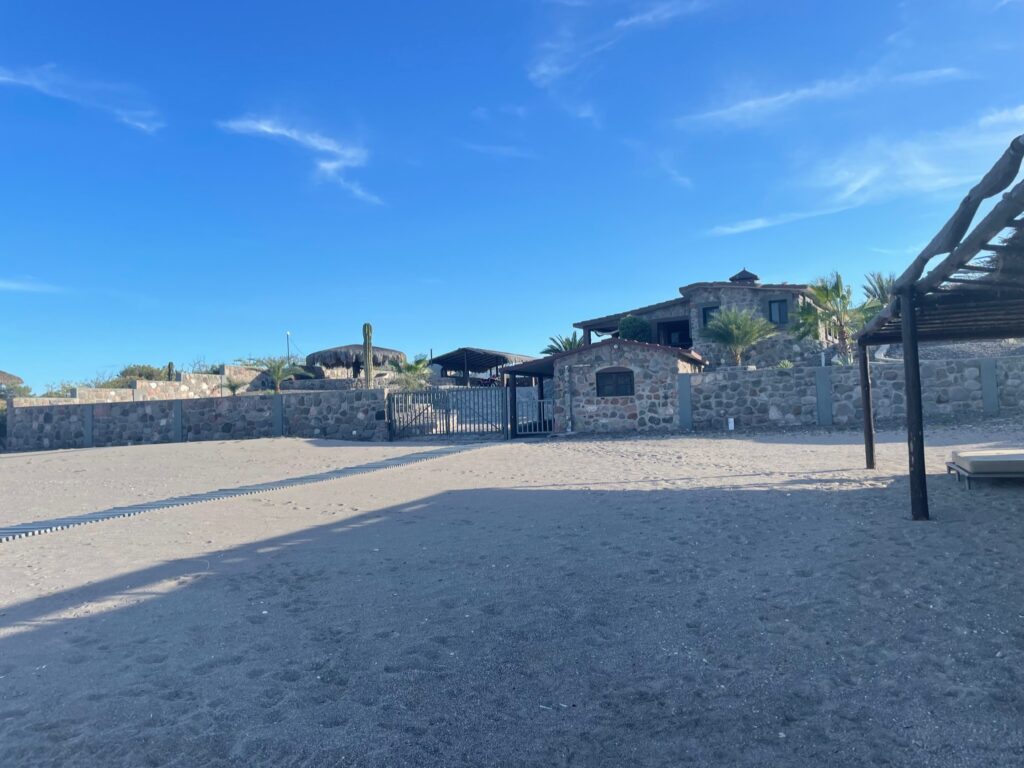
Between the stone house and the raised land that made up the southern tip of the bay was a ravine that probably filled up during high tide. There was another large house set farther back.
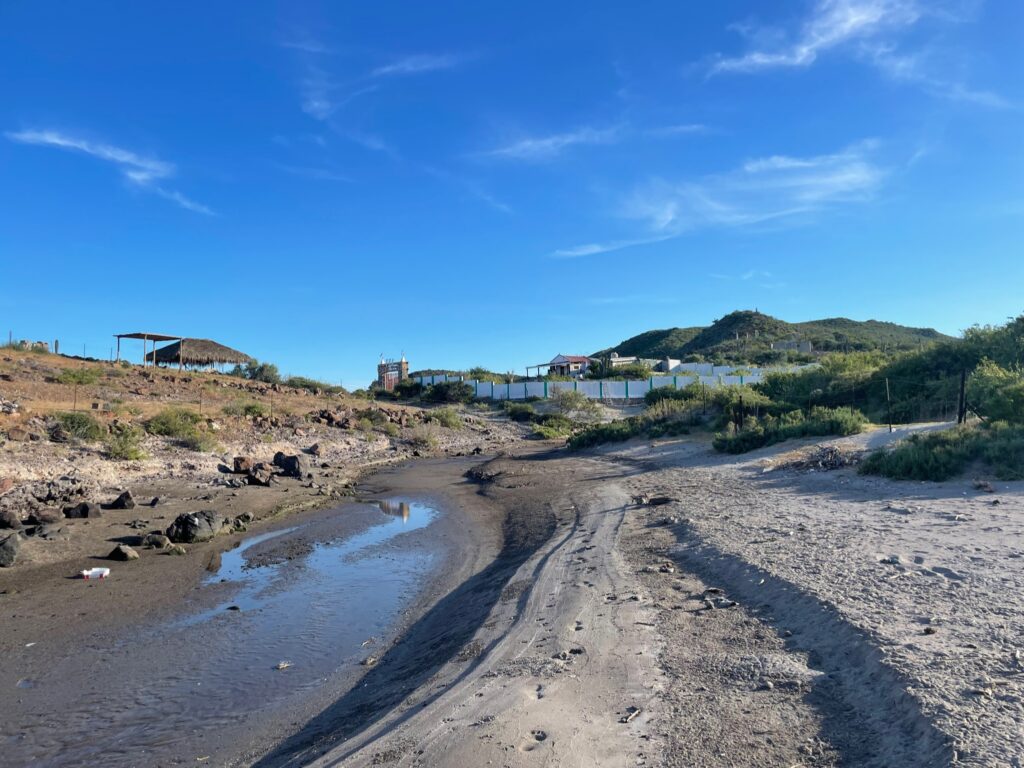
Christi walked up the ravine a little ways, which went surprisingly far inland.
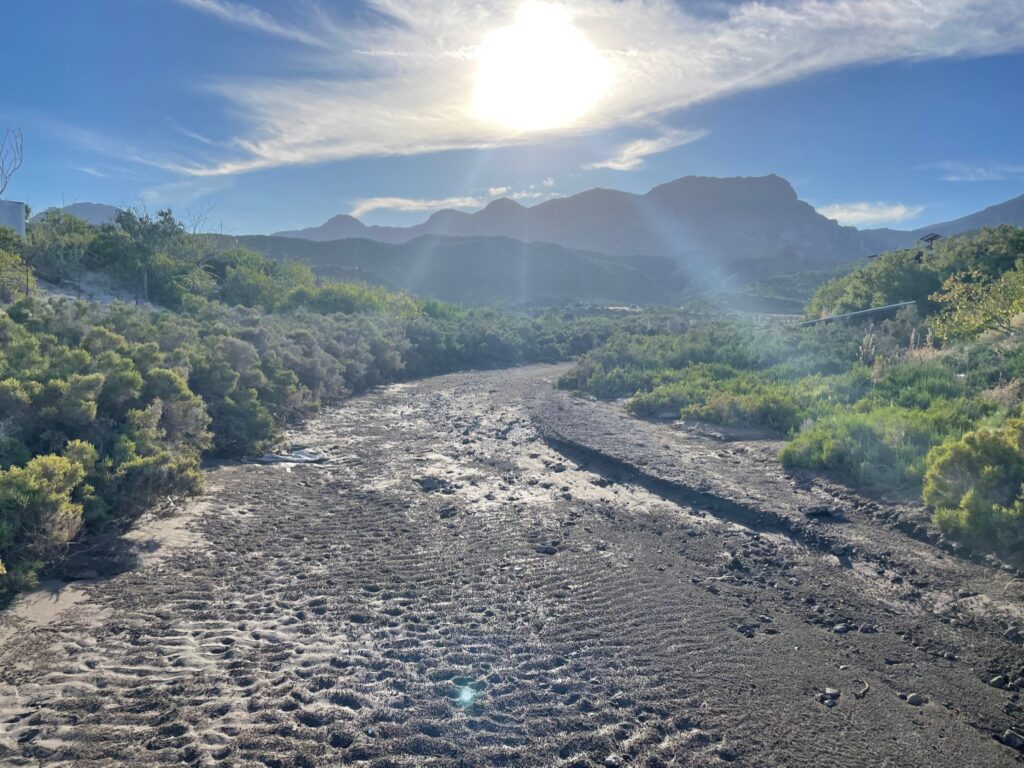
On the other side of the restaurant, there were a couple of houses that looked to be under construction.
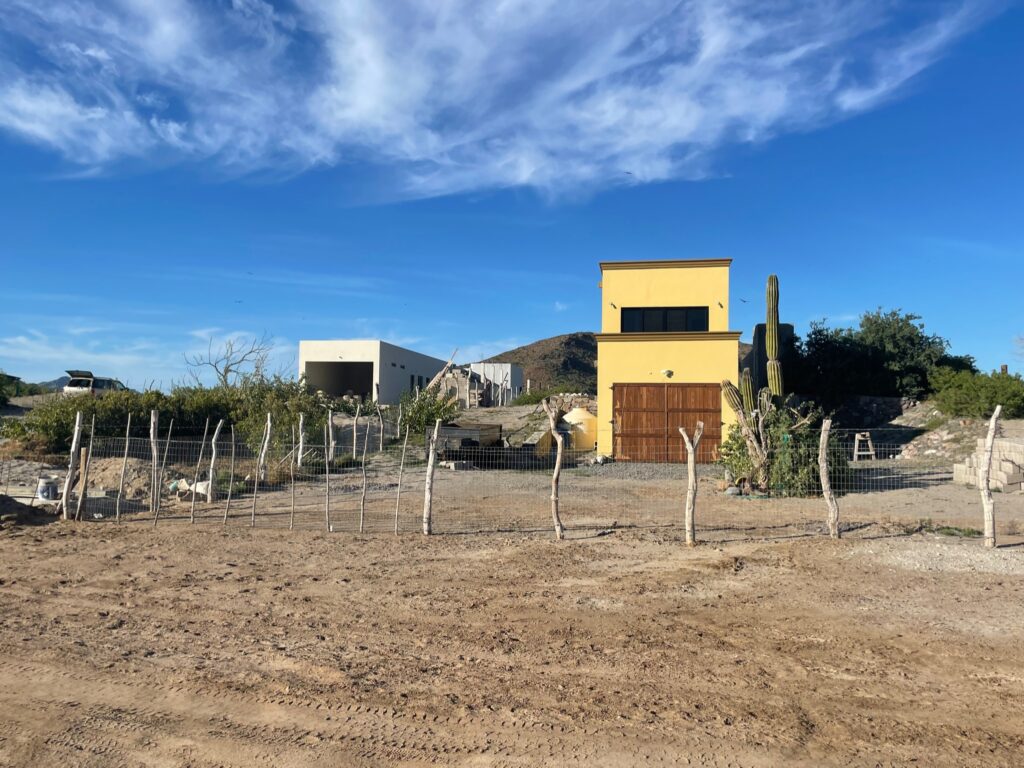
In the area behind the restaurant, there were several partially built structures.
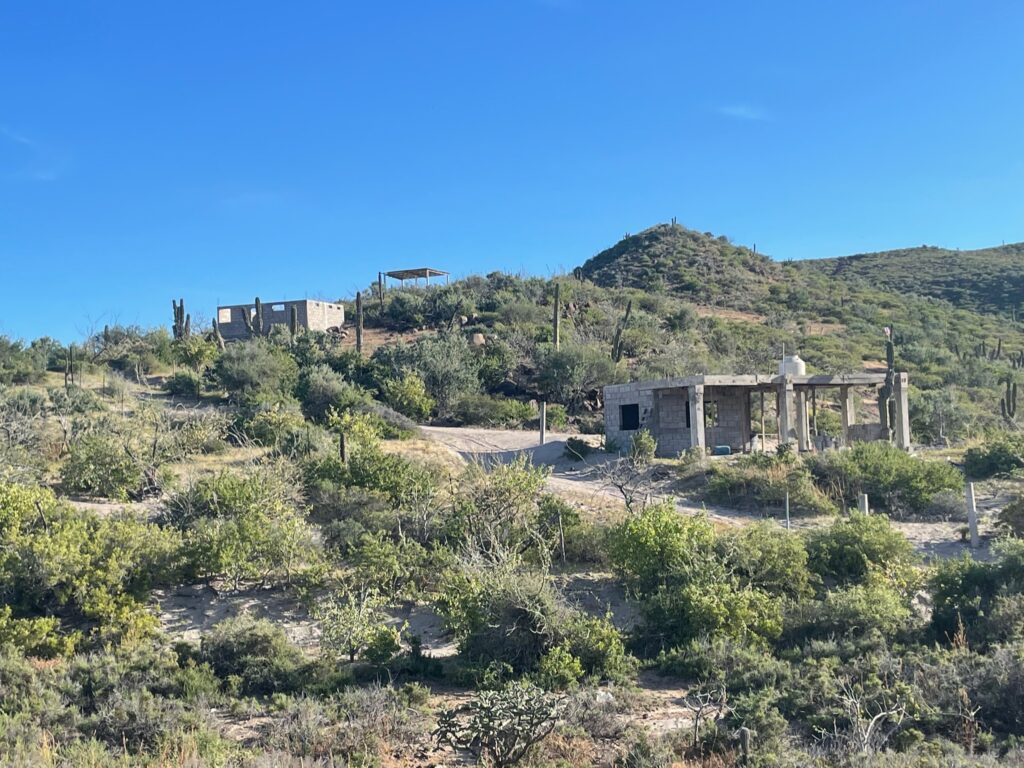
The beach itself was lined with a series of palapas that covered pangas and fishing gear. The “real” buildings were hard to see because they were tucked back behind the palapas.
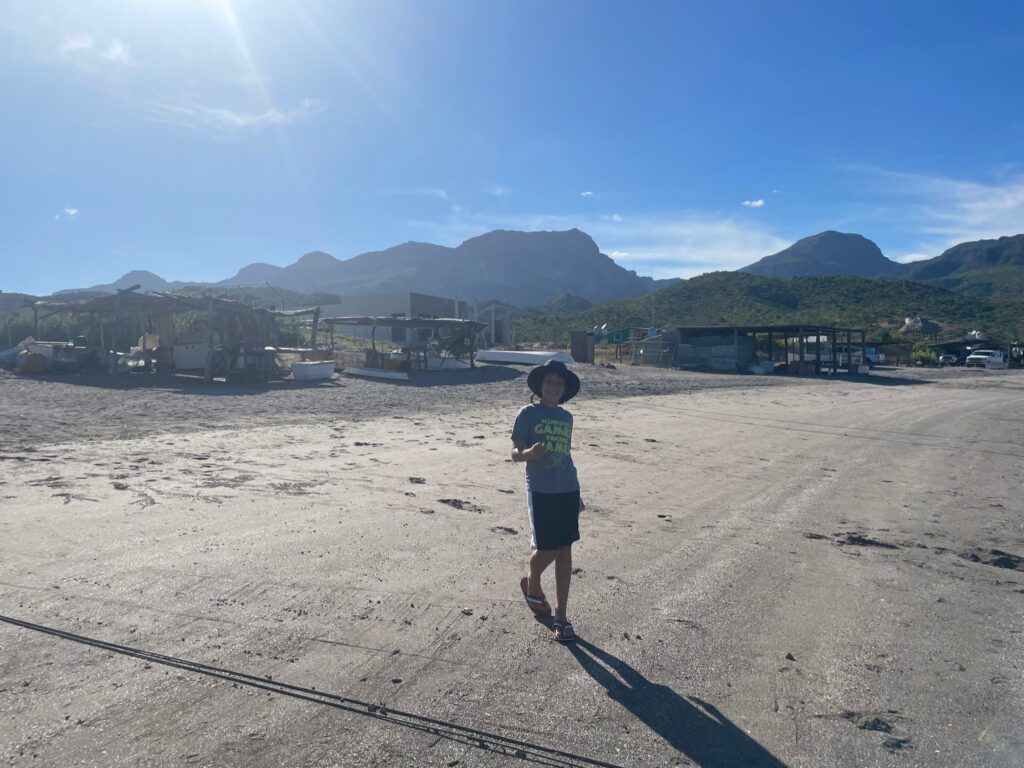
We ended the day much happier than we were when the day we started. We liked our new location and were glad we’d moved!

Great pics. Beautiful Sonoran desert. Glad you are having fun sans bugs.